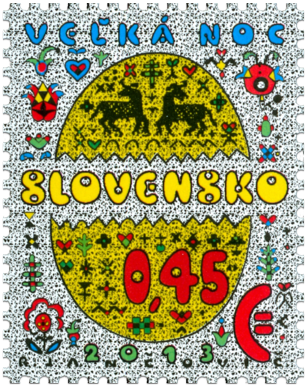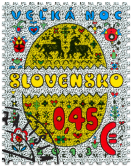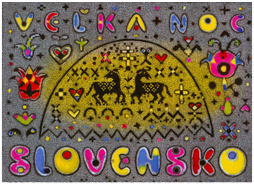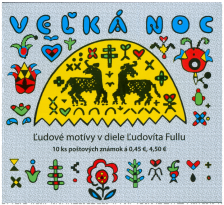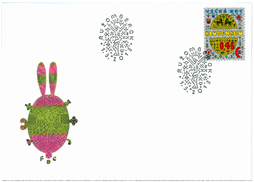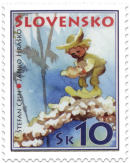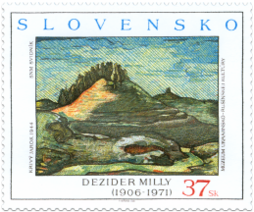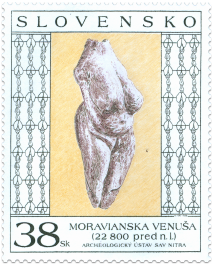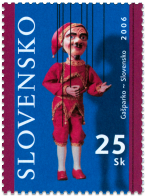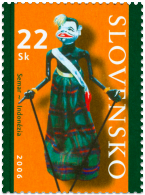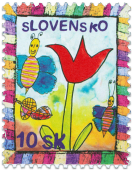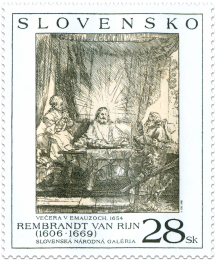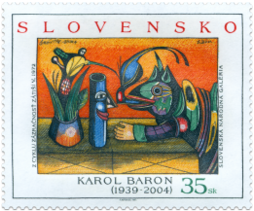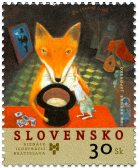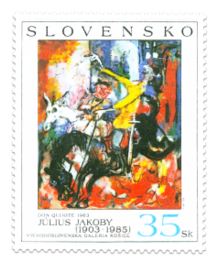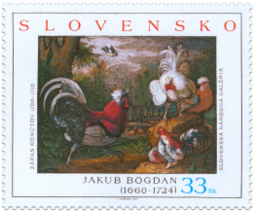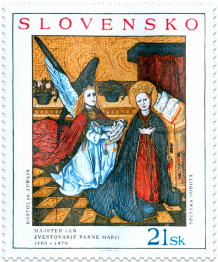534 Date of issue
01.03.2013 Face value
0.45 € Sell price
0.45 €
Ľudovít Fulla (1902 – 1980) belongs undoubtedly to the most distinctive figures of Slovak fine art of the 20th century. In his works, he combined methods inspired by avant-garde painting, folk art, childlike expression, icons and medieval art in an unusual manner. This resulted in a formation of original fine art language which was characterised by a synthesis of rational constructive structural character of a shape with bright emotional colourfulness. Folk art, which was termed as “Fulla’s mother tongue” by one of art critics, represented one of the important, indeed life-giving sources of his works. He got acquainted with it at home, in Orava and Liptov. Experience and memories of this region and manifestations of folk works: such as glass painting, wooden sculptures, folk costumes, laces, chests decorated with ornaments, toys and other artefacts and ordinary life objects accompanied him throughout his life. It was primarily pure, unrefracted colourfulness – an essential harmony between red, yellow, blue and green colour – and linear rudimentary playful view of a primitive folk artist that drew his attention and which he managed to apply in his artistic expression. In his later works he discovered for himself mainly motives of folk decorativeness based on ability to abstract as well as on principles of repetition and multiplication of an essential motive: roses from folk glass paintings can be found in floral borders, lace patterns in a grid. Several linear signs found in works from the 1960s and 1970s were derived from a shape repertoire of folk architecture (ladder-type fences, gables, crosses, gravestones or columns), or taken from decorative elements of folk ordinary life objects, e.g: chests, crosses, gingerbread forms, Easter eggs or embroideries. Fulla’s shape frequently resulted from combining or more precisely from a collage of forms, playful use of diverse patterns. He not only “borrowed” from folk anonymous authors but also stylized and modified them according to his ideas. These minute sign elements, which were placed deeply in his soul, meant for him “things of the world”.
Katarína Bajcurová
The stamps are with tulip perfume.
Show lessSimilar products
398 Date of issue
30.05.2007
385 Date of issue
20.10.2006
386 Date of issue
20.10.2006
384 Date of issue
27.09.2006
383 Date of issue
27.09.2006
378 Date of issue
31.05.2006
364 Date of issue
20.10.2005
365 Date of issue
20.10.2005
357 Date of issue
23.05.2005
336 Date of issue
20.10.2004
335 Date of issue
20.10.2004
315 Date of issue
28.11.2003
© 2024 POFIS - Postal philatelic service. All rights reserved

